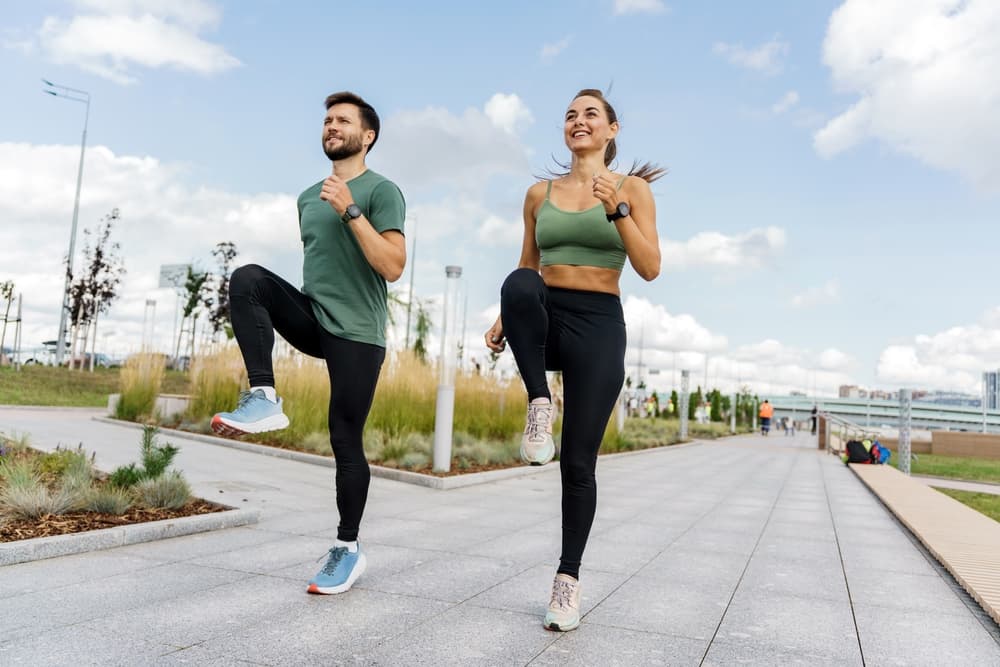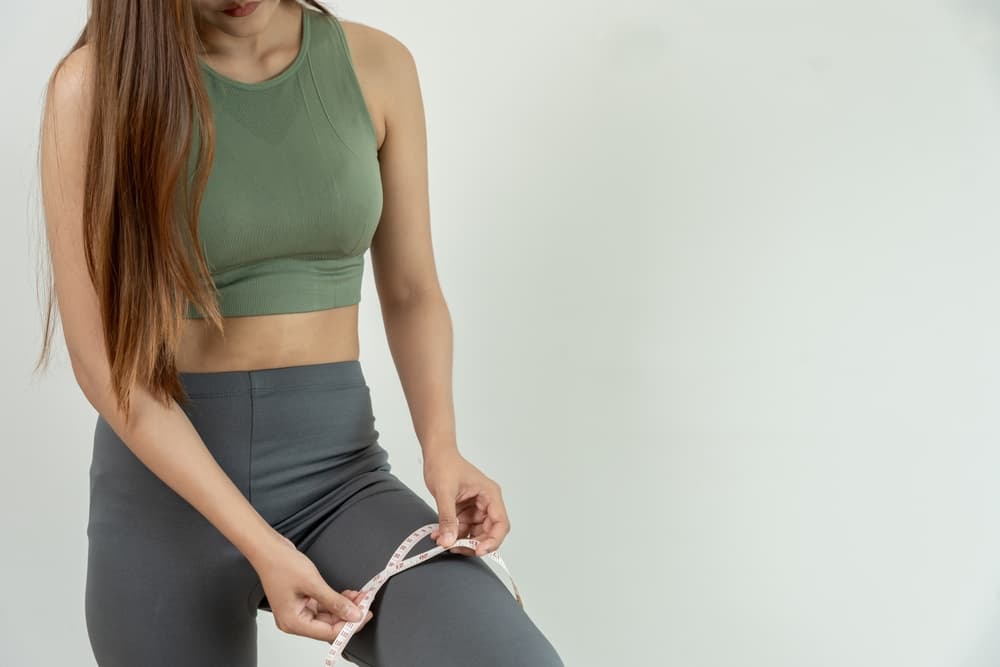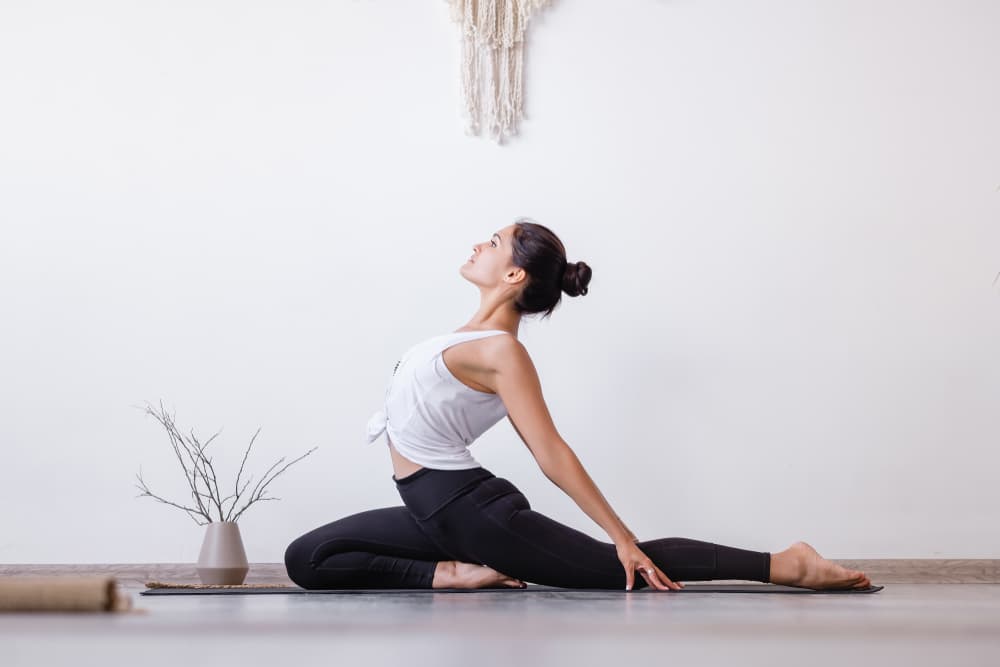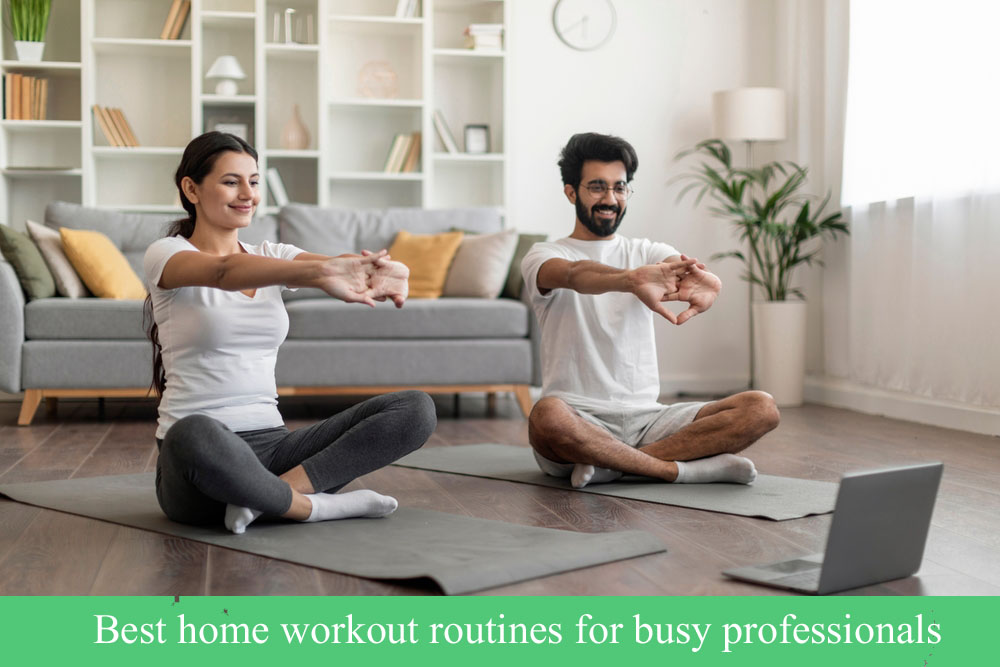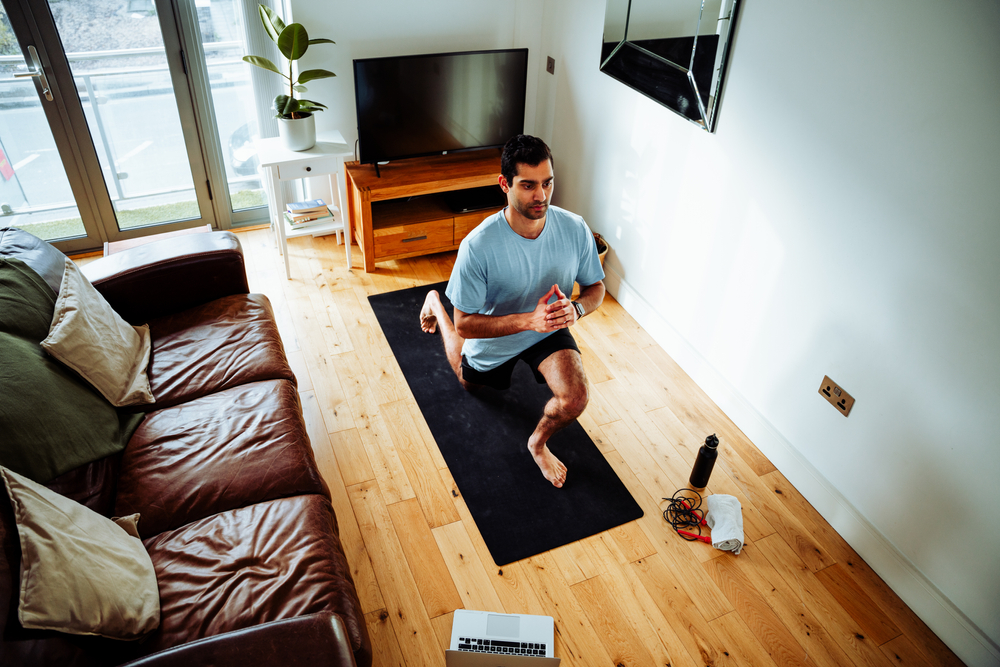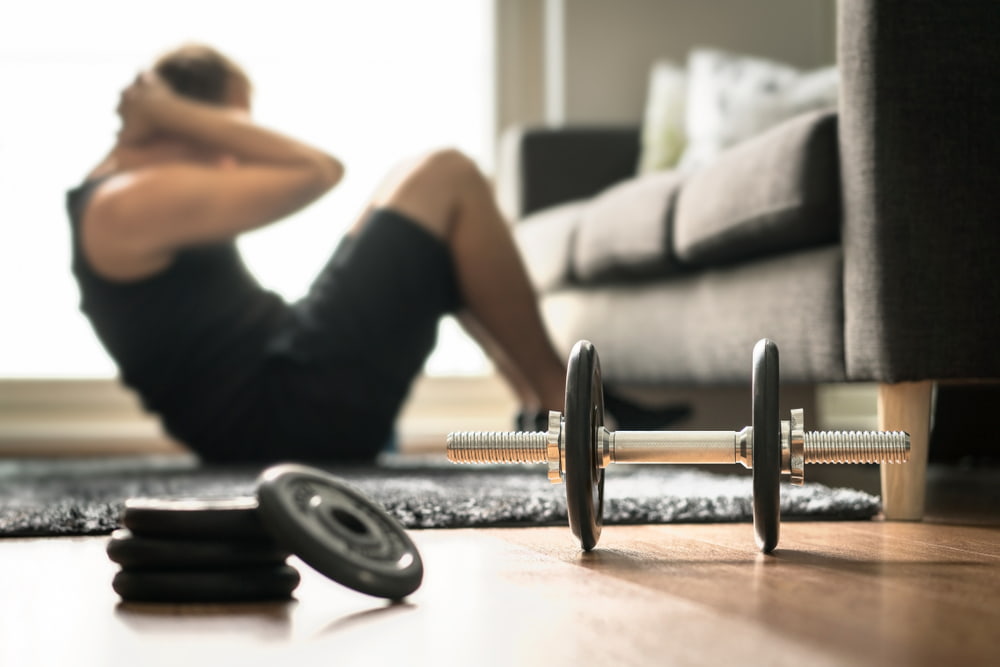Top 5 Glute Focused Cardio Exercises You Can Do Anywhere
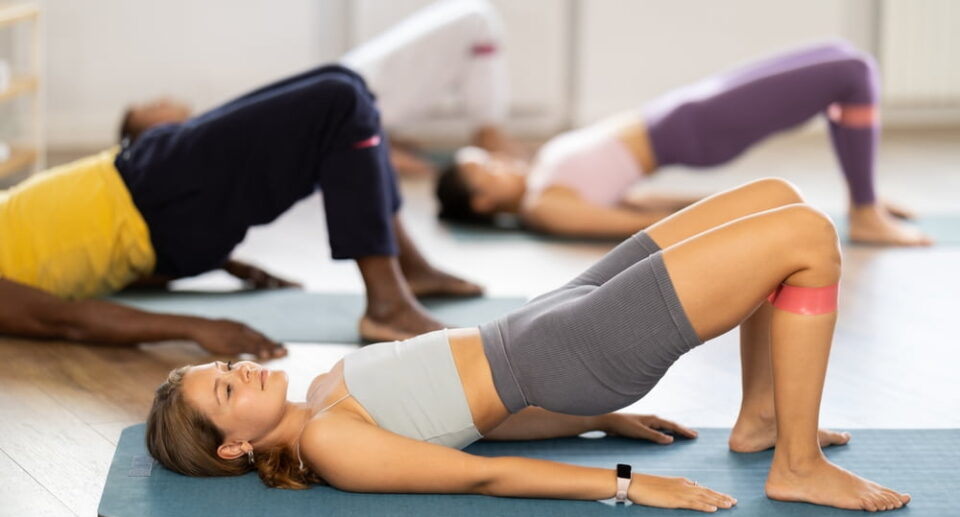

Why Glute-Focused Cardio Matters
Your glutes aren’t just about appearance they’re power engines that drive your body’s strength, balance, and calorie-burning capacity. The glute muscles (gluteus maximus, medius, and minimus) form one of the largest muscle groups in your body, and when they’re properly activated, they help you walk, run, climb, and even stand tall with better posture.
In most people, especially those who sit for long hours, the glutes tend to “shut off,” leading to weaker hips, lower-back discomfort, and poor body alignment. Regular glute-focused cardio workouts reactivate these muscles, enhance circulation, and accelerate fat metabolism. Because the glutes are large, they demand significant energy meaning they burn more calories per minute compared to smaller muscles.
This makes glute-cardio training one of the most efficient ways to tone your lower body, boost your metabolism, and improve overall fitness all without needing heavy gym equipment. Whether you’re trying to sculpt your body, improve athletic performance, or simply stay active at home, glute-focused cardio offers a functional and accessible way to achieve visible results.
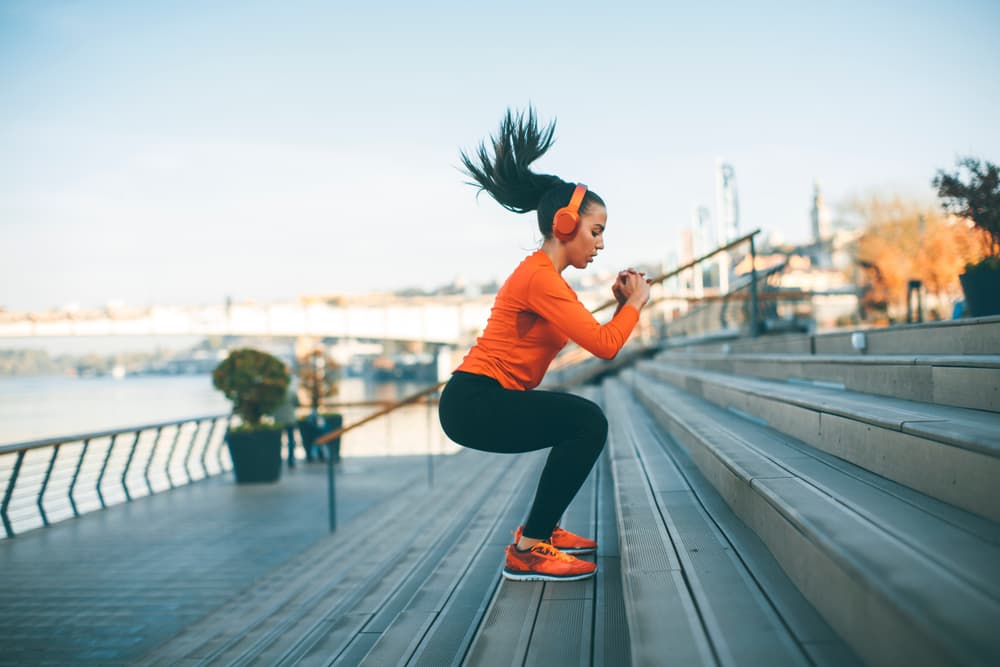

Best Cardio Exercises That Target Your Glutes
Building strong and toned glutes doesn’t always require heavy weights or gym machines. The right cardio exercises can effectively target your lower body while keeping your heart rate elevated, leading to both fat loss and muscle strengthening. Cardio that engages the glutes not only burns calories but also develops power and stability in your hips and legs, improving your performance in daily movements as well as sports.
One of the most effective exercises for glute activation is stair climbing. Whether you’re using a staircase at home, a hill outside, or a stepper at the gym, this movement requires your glute muscles to push your body upward against gravity. It helps build endurance, strengthens the butt muscles, and increases overall lower body power. Performing stair climbs for short, intense bursts followed by slower recovery periods also works as an excellent form of interval training for fat burning.
Jump squats are another powerful way to combine cardio and strength. As you lower into a squat, your glutes and quads engage to control the descent, and when you explode upward into the jump, the gluteus maximus fires intensely to propel your body off the ground. Repeated over several sets, this movement improves explosive strength, coordination, and muscle tone while keeping your heart rate high. To protect your joints, it’s important to land softly with bent knees and proper posture.
Step-ups offer a versatile and easily accessible option that mimics real-life movements such as climbing or walking uphill. Using a sturdy chair, bench, or staircase, you can alternate legs while maintaining steady breathing. This exercise not only improves balance and unilateral strength but also enhances muscle symmetry between the left and right sides of the body. When done rhythmically, step-ups create a smooth cardio flow that engages the entire lower body.
Lunge variations such as walking lunges, reverse lunges, and side lunges are also essential for developing the glutes through a full range of motion. Lunges engage the gluteus medius and minimus, the smaller stabilizing muscles that maintain hip alignment and posture. Incorporating dynamic lunges into your fitness routine boosts both flexibility and endurance. Adding resistance bands or light dumbbells can increase the challenge and improve muscle definition over time.
Lastly, skater jumps, also known as lateral bounds, are an excellent way to train your glutes through side-to-side motion. This movement strengthens the outer glute muscles and improves lateral stability, which is often overlooked in traditional workouts. By mimicking the motion of an ice skater, you challenge your balance, coordination, and lower body strength simultaneously, making it a perfect bodyweight exercise for home cardio training.
These glute-focused cardio movements not only help in toning and shaping but also build a foundation for better posture, stronger legs, and efficient fat metabolism. When practiced regularly with proper form, they enhance both appearance and performance, turning your daily workout into a dynamic, full-body training experience that can be done anywhere.
No-Equipment Glute Workouts You Can Do at Home
Working out at home can be just as effective as training in a gym if the exercises are performed with focus and consistency. Glute development depends more on muscle engagement than on the use of heavy weights, which means you can build strength and tone using only your bodyweight and a little creativity. The key is to control each movement, keep your core stable, and maintain proper form so the glute muscles remain fully activated throughout the workout.
One of the most effective bodyweight movements for targeting the glutes is the glute bridge. By lying flat on your back, bending your knees, and lifting your hips upward, you directly activate the gluteus maximus while stabilizing the hips and lower back. Holding the top position for a few seconds intensifies the contraction and improves muscle endurance. This simple move also helps correct posture and reduces lower-back discomfort caused by prolonged sitting.
Another excellent home exercise is the single-leg glute bridge, which adds an element of balance and control. When you lift one leg off the ground, your working glute must support your entire bodyweight, forcing deeper engagement. This variation strengthens the muscles independently and corrects imbalances between the left and right sides. Practicing this regularly enhances coordination and stability, both of which are essential for daily movement.
Donkey kicks are another great way to build the lower body without equipment. Starting on all fours, you extend one leg backward and upward while keeping your core tight. The movement directly targets the glutes and hamstrings while improving hip mobility. To make the exercise more challenging, you can slow down the motion, increase repetitions, or use a resistance band around your thighs for added tension.
Fire hydrants are also extremely effective for activating the side glute muscles. This exercise strengthens the gluteus medius and helps with hip stabilization, which supports proper walking and running mechanics. Performing controlled repetitions on each side ensures balanced muscle growth and can reduce the risk of knee and hip strain.
If you prefer standing exercises, try alternating reverse lunges and squats in a circuit. This keeps your heart rate elevated, creating a home cardio workout that also develops strength and endurance. The combination of squats and lunges ensures that all parts of your glutes upper, middle, and lower—receive proper stimulation. You can finish your session with a one-minute wall sit to engage the glutes and thighs under tension, mimicking the endurance effect of holding a challenging position.
Even though these workouts don’t require machines or dumbbells, they can deliver remarkable results when done consistently. To see visible improvement, focus on controlled movement, deep breathing, and gradual progression in intensity. Over time, bodyweight glute exercises can transform your lower body, improve mobility, and enhance overall fitness without leaving the comfort of your home.


Common Mistakes During Glute Cardio Sessions
Many people begin glute-focused cardio workouts with great motivation but fail to see results because of a few common mistakes that limit muscle activation and overall performance. Understanding these errors is essential to improving your form, reducing the risk of injury, and maximizing your results. When performed correctly, glute cardio sessions can dramatically enhance strength, endurance, and fat burning.
One of the most frequent issues is performing exercises with the wrong posture. Many individuals squat or lunge while letting their knees move too far forward, or they arch their lower back excessively. This shifts the workload away from the glutes to the quads or lower spine, which not only decreases glute engagement but also increases the chance of joint pain. The best way to fix this is by maintaining a neutral spine, keeping your chest lifted, and pressing through your heels instead of your toes. The American Council on Exercise (ACE) offers excellent guidance on correcting squat and lunge mechanics for better muscle activation.
Another major mistake is neglecting proper warm-up and glute activation before starting cardio. If your glute muscles remain inactive, your body compensates by using the hamstrings or lower back during movements like step-ups or jump squats. This imbalance can cause tightness, fatigue, and long-term weakness. Simple activation drills such as glute bridges, monster walks, or hip circles for five minutes before the main workout can dramatically improve performance. According to research from the National Strength and Conditioning Association (NSCA), pre-activation enhances neuromuscular control and optimizes power output during high-intensity exercise.
Overtraining is another challenge many fitness enthusiasts face when trying to tone their lower body quickly. Doing glute workouts every day without adequate rest can lead to fatigue, soreness, and reduced muscle recovery. The glutes, like any other muscle group, grow and strengthen during rest periods, not just during exercise. Ideally, a balanced routine should include two to three dedicated glute sessions per week, allowing at least 48 hours between intense workouts. The Cleveland Clinic emphasizes the importance of recovery and rest to prevent overuse injuries and maintain consistent progress.
A less obvious but equally important mistake is ignoring the mind–muscle connection. Many people rush through movements without consciously engaging the glutes, which significantly reduces the effectiveness of each rep. Focusing mentally on the working muscles helps stimulate deeper contraction and ensures better results over time. Slowing down and controlling each repetition can make even simple bodyweight exercises feel more intense and productive.
Finally, poor breathing technique can also affect performance. Holding your breath or breathing shallowly limits oxygen flow, which can lead to fatigue and decreased endurance. Proper breathing patterns such as inhaling during the eccentric phase and exhaling during the exertion help stabilize your core and support efficient movement throughout each exercise.
Avoiding these mistakes turns a basic workout into a well-rounded, results-driven fitness routine. Correct form, consistent activation, adequate rest, and mental focus are the key elements that separate an average glute cardio session from a transformative one.
Weekly Glute Cardio Plan for Visible Results
Consistency is the foundation of any effective training plan, and glute-focused cardio is no exception. Visible results come from a structured approach that balances exercise intensity, muscle recovery, and gradual progression. The goal is to train your glutes and lower body enough to stimulate fat burning and muscle development without pushing your body to exhaustion. A weekly plan helps maintain motivation and provides measurable progress toward a stronger, more sculpted physique.
A balanced glute cardio routine can begin with five active days and two rest or recovery days per week. On the first day, focus on stair climbing or step-ups performed in short, high-intensity intervals for about thirty minutes. This not only strengthens your glutes but also boosts cardiovascular endurance. The second day can include a combination of jump squats and walking lunges performed in alternating circuits. This pairing helps target multiple muscle fibers while maintaining a high heart rate, leading to efficient calorie expenditure.
By the third day, your muscles will need some low-impact work to promote recovery without losing momentum. Glute bridges, donkey kicks, and fire hydrants are perfect options for this phase. They enhance glute activation, improve hip stability, and encourage blood flow to the working muscles without putting stress on the joints. You can complete this session in twenty to twenty-five minutes, focusing on controlled movement and deep breathing.
The fourth day should bring back a more dynamic workout. Combine skater jumps, reverse lunges, and high knees for a powerful cardio session that builds agility and endurance. Performing these in a circuit format thirty seconds of work followed by fifteen seconds of rest creates a fat-burning rhythm while improving coordination. The fifth day can be a repeat of the stair or step-up session, but with added variation such as side steps or longer intervals to challenge your glutes further.
The sixth and seventh days should prioritize recovery. Active rest can include light stretching, yoga, or a short walk. These activities maintain circulation and flexibility while giving your glutes time to repair and strengthen. Without rest, muscles can’t rebuild properly, which slows progress and increases fatigue.
Progress tracking is crucial to stay motivated. Instead of focusing solely on the scale, observe how your strength, balance, and endurance improve over time. You might notice that your jumps become more powerful, your squats feel deeper, or your posture naturally improves. Keeping a simple workout log recording time, intensity, and perceived effort helps visualize growth. Taking progress photos every two weeks also provides a clear picture of your body’s transformation.
This structured weekly plan allows your glutes to adapt to regular stimulus while maintaining cardiovascular efficiency. Within four to six weeks of consistent effort, most people notice firmer muscles, better hip stability, and increased energy levels. Glute-focused cardio done with discipline and awareness not only reshapes your lower body but also enhances total-body fitness, creating a balanced, functional, and confident physique that reflects both strength and health.
Nutrition and Lifestyle Support for Glute Growth and Fat Loss
Exercise alone can’t transform your glutes if your nutrition and lifestyle habits don’t support the process. The body needs proper fuel to build lean muscle, recover efficiently, and burn fat effectively. A balanced approach that includes nutrient-rich foods, adequate rest, and consistent hydration makes the difference between short-term effort and long-term success.
For visible glute development, protein is the key macronutrient. It supports muscle repair and growth after every workout session. Including foods like eggs, fish, chicken breast, lentils, Greek yogurt, and tofu ensures your muscles receive the amino acids they need to rebuild stronger. Pairing protein with complex carbohydrates such as oats, quinoa, and sweet potatoes provides sustained energy for cardio sessions, while healthy fats from avocado, nuts, and olive oil help regulate hormones that influence metabolism and muscle gain.
Hydration is another essential factor often overlooked. Water keeps muscles flexible, joints lubricated, and the body’s recovery systems active. Dehydration, even at mild levels, can decrease performance and slow down fat metabolism. Aim to drink enough water throughout the day, especially before and after workouts.
Lifestyle habits also determine how effectively your body responds to training. Proper sleep around seven to eight hours each night is crucial because muscle recovery and hormone balance occur primarily during rest. Managing stress through mindfulness or deep breathing exercises helps prevent the buildup of cortisol, a hormone that can promote fat retention in the body.
At CoreWellFit, we emphasize that true transformation comes from a complete wellness mindset, not from exercise alone. The brand focuses on helping individuals build sustainable routines through personalized fitness guidance, nutrition awareness, and mental well-being practices. Whether you’re training at home or in a gym, adopting the CoreWellFit philosophy means prioritizing long-term health over quick fixes.
If you want your glute workouts to produce lasting results, keep these guiding principles in mind:
• Eat balanced meals with sufficient protein and whole, unprocessed foods.
• Stay hydrated before, during, and after exercise to support recovery.
• Sleep adequately and avoid overtraining by giving your muscles time to rebuild.
• Maintain consistency rather than intensity small daily actions lead to big changes.
When nutrition, exercise, and mindset work together, progress becomes inevitable. Glute-focused cardio combined with a disciplined diet and mindful lifestyle strengthens not only the lower body but also your overall confidence and resilience. Over time, this harmony of movement and nourishment helps you achieve a sculpted, energetic, and healthy body that reflects the best version of yourself exactly what CoreWellFit stands for.
FAQs and Motivation
When starting a new workout plan, it’s natural to have questions about how long it will take to see results, what to eat, or whether cardio alone can build strong glutes. The truth is, progress depends on a combination of consistency, nutrition, and recovery. To make your journey smoother, here are a few key insights to keep in mind.
Can cardio alone build my glutes?
Cardio exercises that engage large lower-body muscles such as jump squats, stair climbs, and lunges can strengthen and tone your glutes, but true muscle growth requires resistance. Combining glute-focused cardio with bodyweight or resistance band workouts helps stimulate both endurance and hypertrophy, resulting in visible firmness and strength.
How long before I notice changes?
Most people begin to feel stronger and more balanced within two to three weeks of consistent training. Visible muscle definition typically appears after four to six weeks, depending on diet, sleep, and overall activity level. Tracking your progress through photos and notes can help you stay motivated even before visual results become clear.
Do I need supplements for better glute growth?
Supplements are not mandatory. A well-balanced diet rich in whole foods and adequate protein usually provides everything your muscles need. However, those with dietary gaps can benefit from options like whey protein, plant-based protein powder, or omega-3 capsules, as recommended by a health professional.
What if I don’t have much time?
Even fifteen to twenty minutes of focused glute cardio, three to four times per week, can make a difference. The goal is to keep the muscles active and the heart rate elevated. Consistency matters more than duration; short but high-quality sessions will produce steady improvement.
Your fitness journey is not just about aesthetics it’s about building strength, energy, and self-confidence that translate into every part of life. CoreWellFit encourages you to view your workout as an investment in yourself, a daily practice that strengthens both your body and your mindset. Whether you exercise at home, in the gym, or outdoors, remember that every repetition brings you closer to the stronger version of you.
Fuel Your Strength, Shape Your Confidence
Now is the perfect moment to take control of your transformation and make your commitment real. Start practicing the glute-focused cardio routine you’ve learned here, nourish your body with balance, and stay consistent through each step of the journey.
If you want to receive exclusive workout guides, nutrition insights, and motivational content straight to your inbox, join the CoreWellFit community today. Subscribing will give you early access to fitness challenges, expert advice, and evidence-based plans designed to keep you inspired and accountable on your path to lasting health and strength.
👉 Subscribe to CoreWellFit here and begin shaping a stronger, healthier, and more confident version of yourself starting right now.

